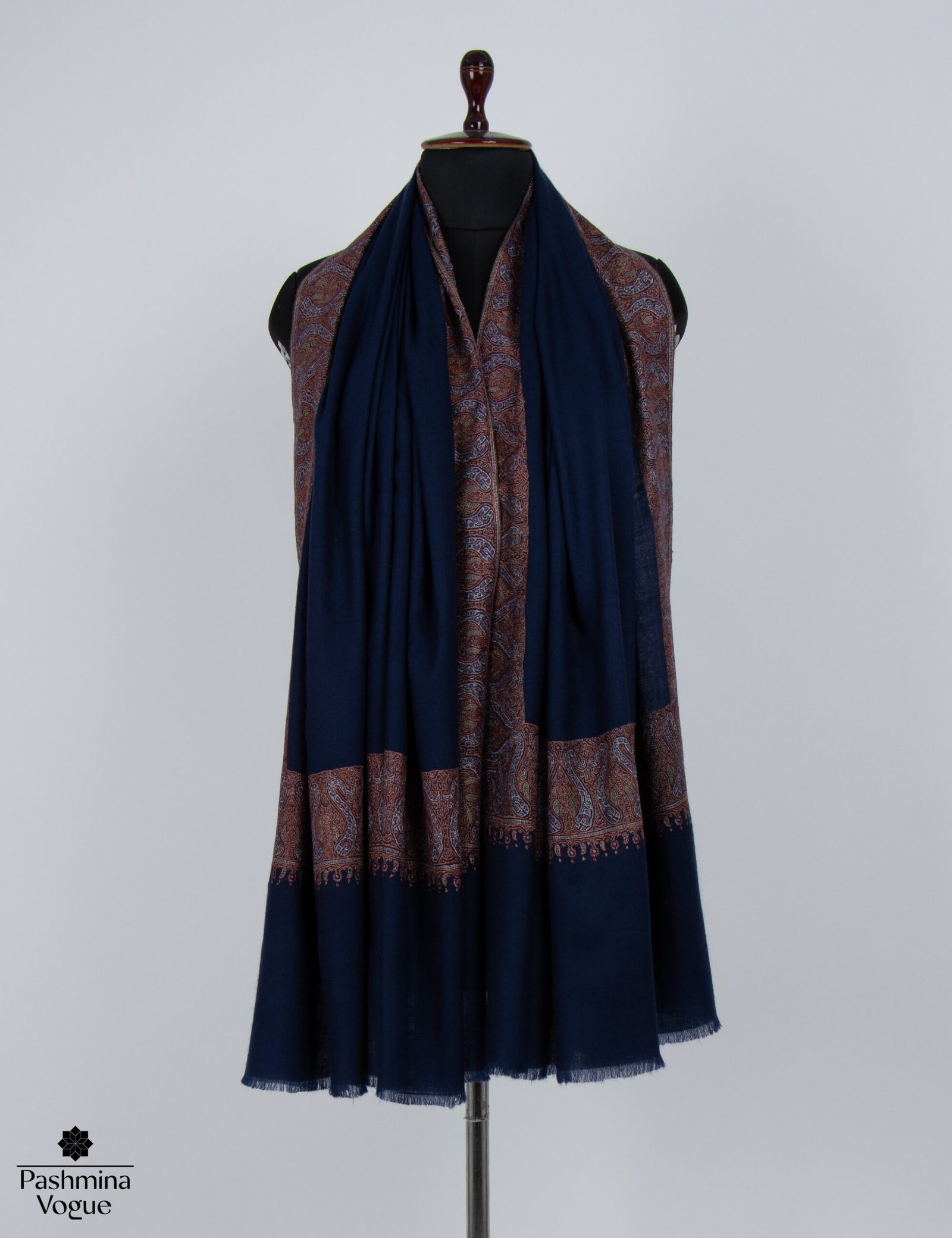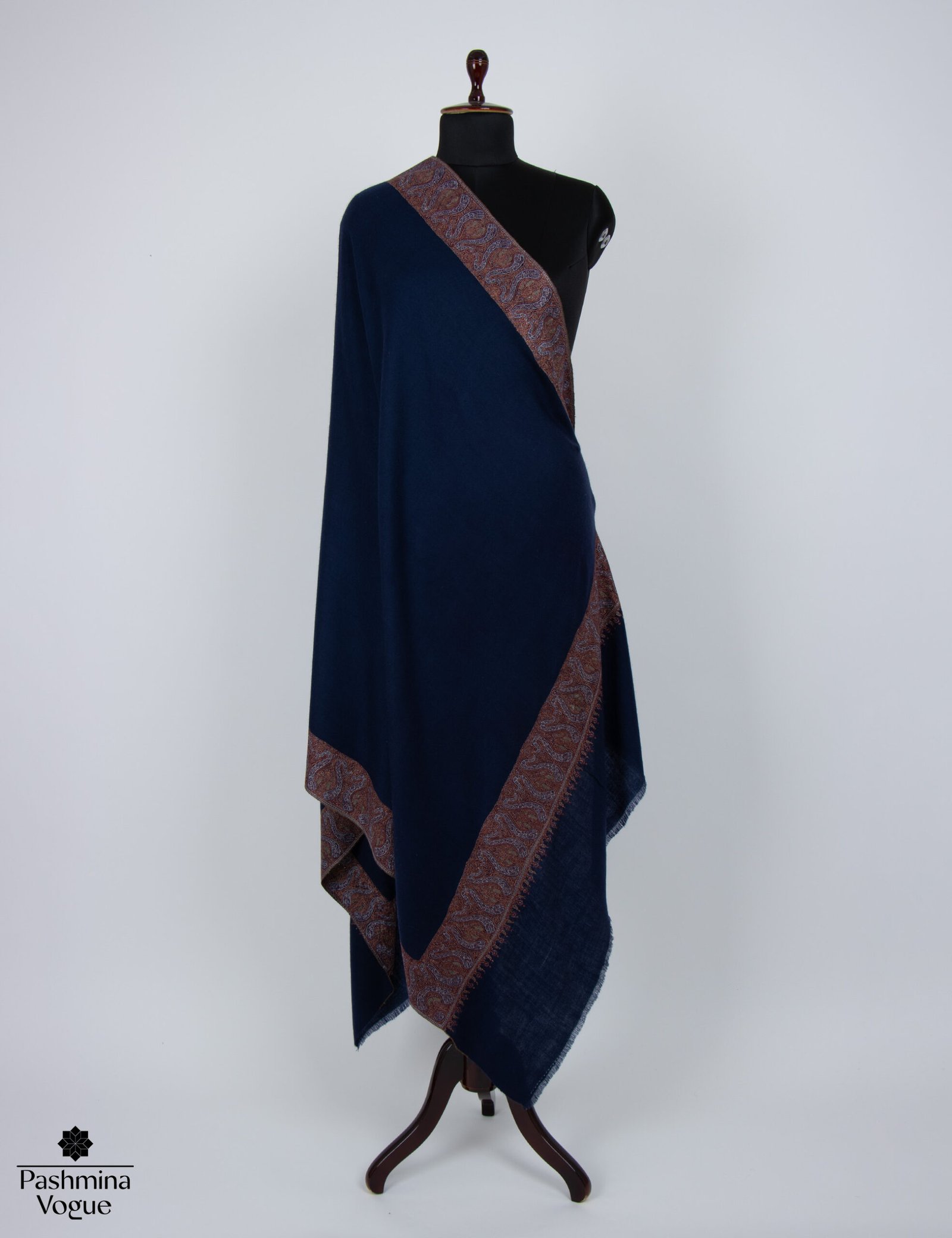Pashmina shawls are more than just a fashion symbol. The astonishingly intricate craftsmanship and unique properties of these shawls enhance their beauty. While Pashmina has high demand in the global market, its production is slow and limited, as crafting excellent designs on Pashmina fabric takes weeks, months, or even years due to its fully handcrafted nature. This has led to scarcity and a rise in counterfeit Pashmina in the market.
Unfortunately, many deceived buyers fall into the trap of purchasing fake Pashmina because they are unaware of the differences between authentic and counterfeit products. Many sellers scam people by taking advantage of their lack of knowledge. Suppose you want to invest specifically in Pashmina and end up buying a fake one. In that case, it is totally heartbreaking, especially if you paid a huge amount or the true cost of genuine Pashmina. But if somebody charged you a minimal amount and scammed you by saying that it is a Pashmina shawl, you can still use that piece of cloth. But stay aware next time.
In this blog, you will learn how to identify whether the Pashmina you are buying is authentic or fake without having to rely on the seller.

What is a Real Pashmina Made Of?
Real Pashmina is obtained from the Changthangi goat, one of the rare Pashmina goats that produce Cashmere wool, which is then transformed into authentic Pashmina through fully hand-spinning techniques. Skilled artisans meticulously perform each step to convert raw Cashmere wool into the final Pashmina thread. The 12 to 15-micron Pashmina threads are so delicate that they require exceptional care while crafting shawls, wraps, and other accessories. This intricate craftsmanship results in exceptional and unique designs.
Real Pashmina is known for its incredible warmth, softness, delicacy, lightweight feel, and premium quality.

What Are Fake Pashminas Made Of?
Fake Pashminas are made from blended wool and synthetic materials such as viscose, rayon, polyester, and low-quality wool. They are a cheaper alternative to Pashmina, as they are widely available in the market at low prices due to mass machine production. Although they mimic the appearance of real Pashmina, they cannot compare in quality, softness, or authenticity.
| Material of Fake Pashmina | Why It’s Used | Main Differences from Real Pashmina |
| Viscose/Rayon | Cheap quality, low price, and widely available. | Looks shiny but lacks softness and insulation properties. |
| Polyester | Mass-produced and available at lower prices. | Stiff texture, synthetic feel, and not breathable. |
| Acrylic Wool Blends | Imitates the look of Pashmina wool. | Heavier feel, rough texture, and lacks warmth. |
| Low-Quality Wool | A cheaper alternative to real Pashmina. | Less durable and lacks the premium feel. |
How to Identify a Fake Pashmina?
Burn Test – If you have already purchased a Pashmina garment and want to check its authenticity, try the burn test. When you burn a small extra thread of real Pashmina, it emits a burnt hair odor. In contrast, fake Pashmina, made of synthetic fibers, melts like plastic.
Water Test – The simplest way to check if your Pashmina is real is by spilling a small amount of water on it. Genuine Pashmina absorbs water, while fake ones repel it.
Touch & Feel – Authentic Pashmina is delicate, extremely soft, and lightweight. Run your fingers over the fabric to experience its rich texture. Fake Pashmina lacks these characteristics and often feels synthetic.
Shine & Texture – Real Pashmina has a natural, subtle shine and a soft, luxurious texture. In contrast, fake Pashmina has an artificial shine and a rougher texture.
Price Too Good to Be True? – 100% pure Pashmina is expensive due to its intricate craftsmanship. If a Pashmina is available at a significantly lower price, it is likely a fake, mass-produced alternative.
Why You Should Avoid Fake Pashminas
Fake Pashmina shawls are not at all breathable, and their roughness can be itchy, especially under direct sunlight. They do not have the incredible warmth properties of real Pashmina. These shawls cannot last long; it will lose its shape and quality after just a few washes.
The rise of fake Pashmina in the market is unfair to the skilled local artisans who depend on this traditional handwoven craftsmanship for their livelihood. Those who are interested in buying the true art form of Pashmina should buy directly from Kashmiris, as they are the only ones in the world proficient in the entire handwoven process. While Pashmina wool is sourced from Ladakh, China, Nepal, or Tibet, it is brought to Kashmir for further processing. The craftsmanship of Kashmiri artisans has never been copied or learned by any other artisans in the world. We can say that this art is in the blood of Kashmiris.
Where to Buy Authentic Pashmina Shawls?
To buy an authentic Pashmina shawl, you need to research both online and offline. When buying Pashmina online, search for trusted brands, certified sellers, or local seller brands. Check their websites and social media accounts. If they are genuine, they will have correct contact information, and you can communicate with them regarding your needs.
When buying from the market, visit trusted brand shops, authentic and certified sellers, or local artisan shops. Take the piece, feel its premium quality, softness, and lightweight nature, and look for the Pashmina GI certification mark in India. This certification is given by the government to Pashmina products after passing the GI tag test.
Conclusion
Fake Pashminas are made from low-quality materials, imitating the richness of authentic Pashmina. Educate yourself about the qualities of original Pashmina and how to identify the real one with the rising number of fakes. Verify the authenticity before making a purchase to ensure you are making an appropriate investment. Fake Pashminas are cheaper in both price and quality, whereas 100% pure Pashminas are expensive and have unparalleled quality with unmatched craftsmanship. Visit our website to explore a wide range of pure Pashmina shawls, wraps, and more. Enjoy shopping today.
